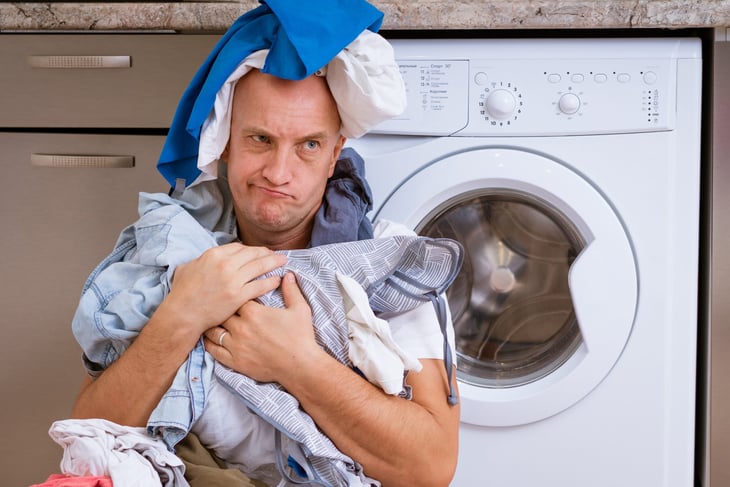
When you’re in a hurry to do laundry, it may be tempting to just toss a mix of clothing and other items into the washer, hoping for the best. However, haphazard laundry habits can lead to ruined clothing, costly repairs — and even washer replacement when repair estimates outweigh the cost of a new machine.
Replacing ruined or damaged clothing is expensive, and a new washing machine can run anywhere from around $450 to $2,300, according to HomeAdvisor.
So, you must be careful about what you put in your washing machine. Take a spin through the following items best left out of the washer.
Bath mats

Cleaning rubber-backed or heavy bath mats in your washer can lead to costly repairs or replacement of the appliance, according to longtime appliance repair technician Scott Flint. That’s because the rubber backing found on many bathroom mats can disintegrate during the wash cycle, clogging the drain pump’s motor and drain line with small pieces of rubber, resulting in a ruined drain motor.
Even non-rubber-backed bath mats can wreak havoc on you washer. “Bathroom mats absorb so much water that they end up weighing far more than the washer was designed to handle,” Flint writes in Family Handyman, and that weight is being flung around at high speeds. He recommends only washing them in the heavy duty machines you find at laundromats.
Unchecked pockets

Forgetting to check the pockets of pants, shirts, hoodies, jackets and other clothing could lead to shelling out money from your own pocket for washer repair bills, says Craig Anderson, owner of Appliance Analysts, an online appliance resource. “Coins and metal objects can damage the inside of the washer as it goes through a cycle and also slip into the appliance’s motor, causing permanent damage,” says Anderson.
Coins, keys, paper clips and other metal objects small enough to fit through holes in the washer tub can damage the washer in other ways, too, so empty all pockets before washing, especially if your clothes got dirty working on a DIY project.
“Always check your pockets for any sharp foreign objects,” says Ron Shimek, president of Mr. Appliance, a Neighborly company with more than 290 locations in the U.S. and Canada. “The outer tub of a washer in most cases is plastic, so screws and nails left in a pants pocket can go through the holes in the inner basket and damage the outer tub or in some cases, can go into the pump and damage it.”
Clothing covered in pet hair
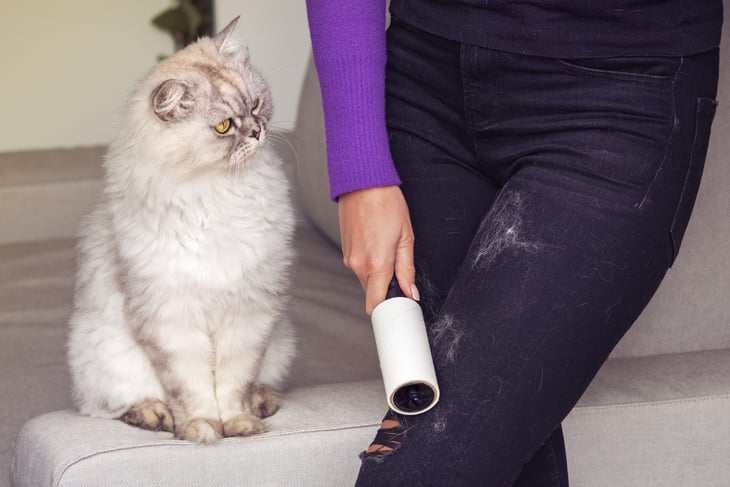
“Clothes with excessive amounts of pet hair can leave fur deposits on the machine, which can not only get fur all over the rest of your clothes, but also go into the appliance’s pipes,” says Anderson. “This can cause problems like clogging or other damage over time.”
For pet-hair-covered clothing, use a lint roller to remove what pet hair you can before putting the items in the washer. For pet beds with removable outer covers, shake out or vacuum the covers before washing at your local laundromat instead of feeling the bite of expensive washer repairs down the road.
Memory foam or latex pillows

You should wash your bed pillows every few months or at least twice a year to rid them of mold, odors bacteria, dead skin, dust mites (along with their feces and urine) and other allergens, according to Consumer Reports and the editors at Martha Stewart, respectively. But don’t be too quick to toss that squishy, memory foam pillow into the washer.
“Memory foam pillows contain material designed to adapt their shape to the pressure applied, so even the delicate cycle in a washer could be too aggressive,” says Anderson. “Washer agitation can break up the foam, causing the pillows to lose shape or soften over time.”
Before cleaning memory foam pillows, always read the cleaning instructions on the label first. Most memory foam and latex pillows should be vacuumed, spot-cleaned with a damp cloth and air-dried on a flat surface, according to Consumer Reports.
Comforters, quilts and rugs
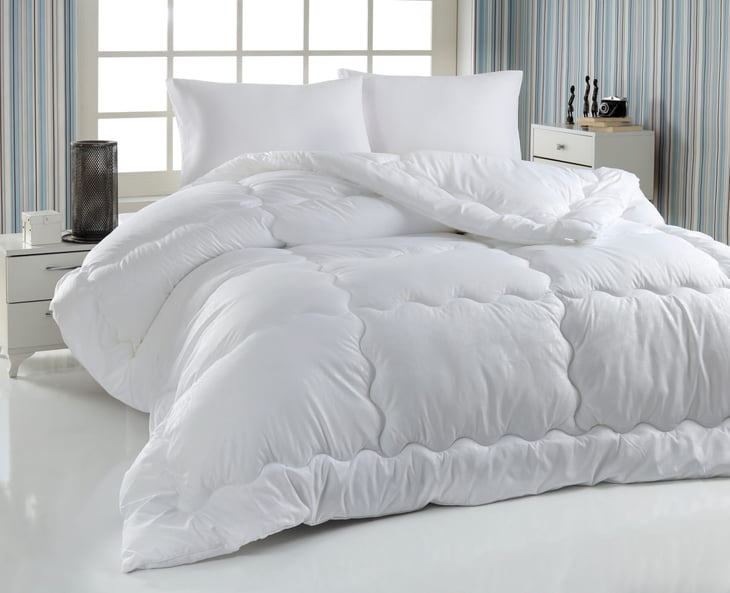
“As a general rule, comforters, quilts and throw rugs do not belong in the washer,” says Shimek. “They are too large and can cause damage to the machine. If the washer is overloaded, the quilt or comforter cannot agitate properly and will not get clean. Damage can also occur to the stitching of your quilt, or the quilt can bunch up and move the filling around.”
Like quilts and comforters, throw rugs are bulky, soak up water and become too heavy for your machine. “They also tend to bunch up in the wash and throw the machine off balance when trying to spin,” says Shimek. “You’ll spend more time rearranging the load and less time cleaning the rug.”
Shimek recommends taking bulky items to the laundromat and washing them in larger-capacity washers on the gentle cycle to protect them.
Running shoes
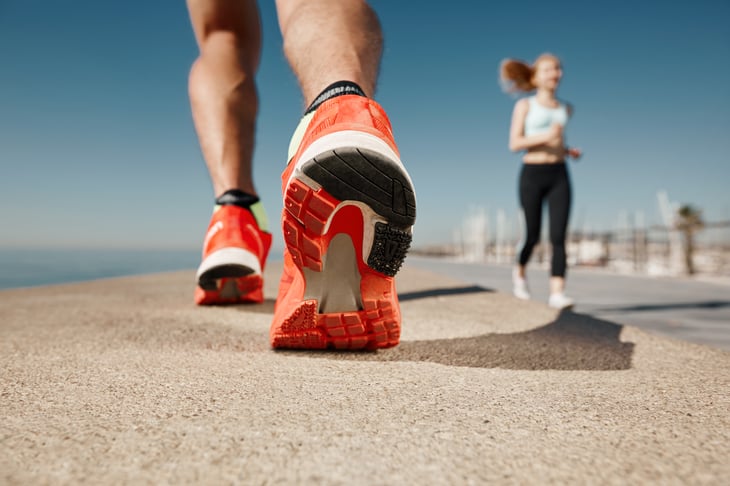
Running shoes may withstand hot pavement, uneven terrain and muddy trails, but that doesn’t mean the pricey footwear will hold up in your washing machine, according to ASICS Corporation, a manufacturer of running shoes and other sporting goods. That’s because many running shoes are made with special gluing techniques and contain synthetic fibers, foams and stitching that can be damaged while sloshing around the washer tub.
ASICS recommends handwashing running shoes with warm water, a mild detergent or soap that’s safe for clothing, a sponge, paper towels and a toothbrush or soft scrubbing brush. Then air-dry the shoes, stuffed with paper towels, to soak up moisture and maintain the shape.
If the running shoe upper is leather, suede or nubuck, use only products designed to clean those materials, which can be damaged by soap and water.
Loose lingerie
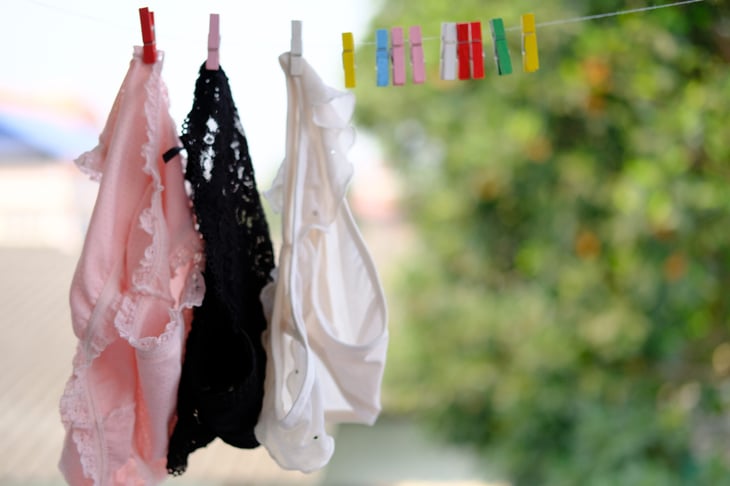
When it comes to washing bras and other lingerie in the washing machine, not every bra should be tossed in the washer. Lingerie manufacturer Playtex says the best way to wash underwear and other delicate lingerie items is handwashing using a detergent for delicates in a basin of water no warmer than 86 degrees Fahrenheit.
If you do wash bras in the washer, Playtex recommends closing the bra clasps first to prevent the bra from getting caught on other clothes or stuck on the washing machine drum during the cycle. Separate the items from other clothing in a washing bag to prevent bra lace from fraying or becoming damaged from friction against non-delicate clothing in the tub.
Loose lingerie in the washer can lead to greater problems than a misshapen, lackluster brassiere, though.
“Lingerie should be put in a fine washing bag before putting them in the washer, since it is common for these items to get stuck in the washer pump,” says Shimek. “For example, underwires from bras are common to find in a washer pump.”
Why take a chance on expensive washer repairs? Investing in a $5 to $15 mesh laundry bag is a lot cheaper than shelling out an average of $350 for a new washing machine pump, installation and labor, according to HomeAdvisor.





Add a Comment
Our Policy: We welcome relevant and respectful comments in order to foster healthy and informative discussions. All other comments may be removed. Comments with links are automatically held for moderation.